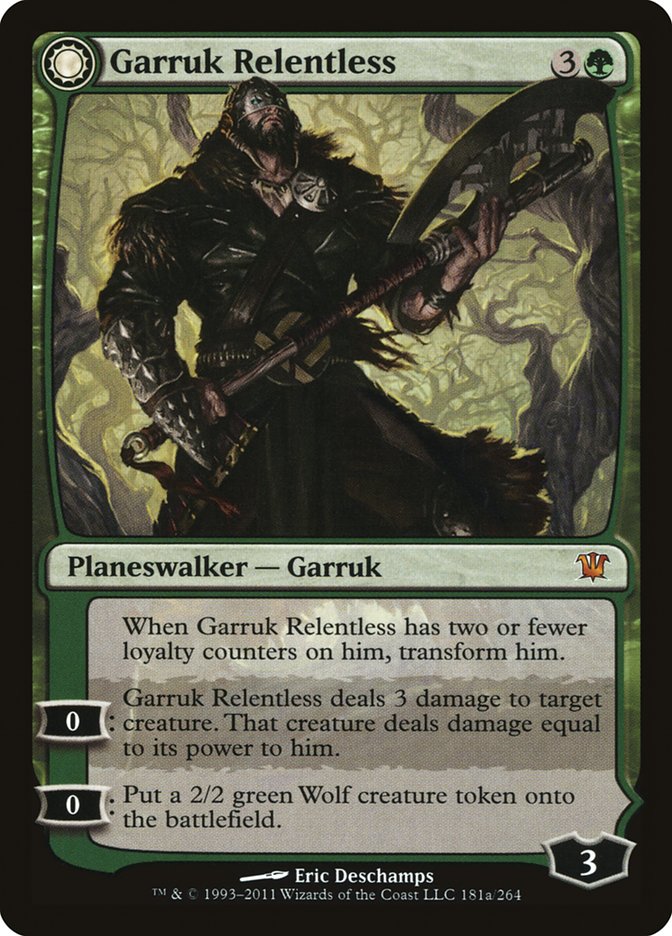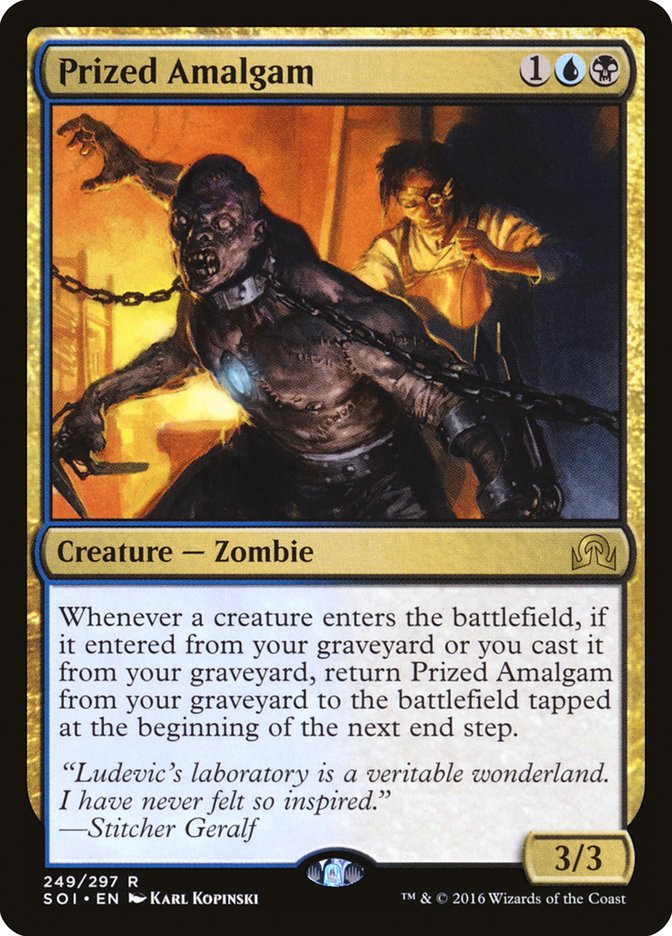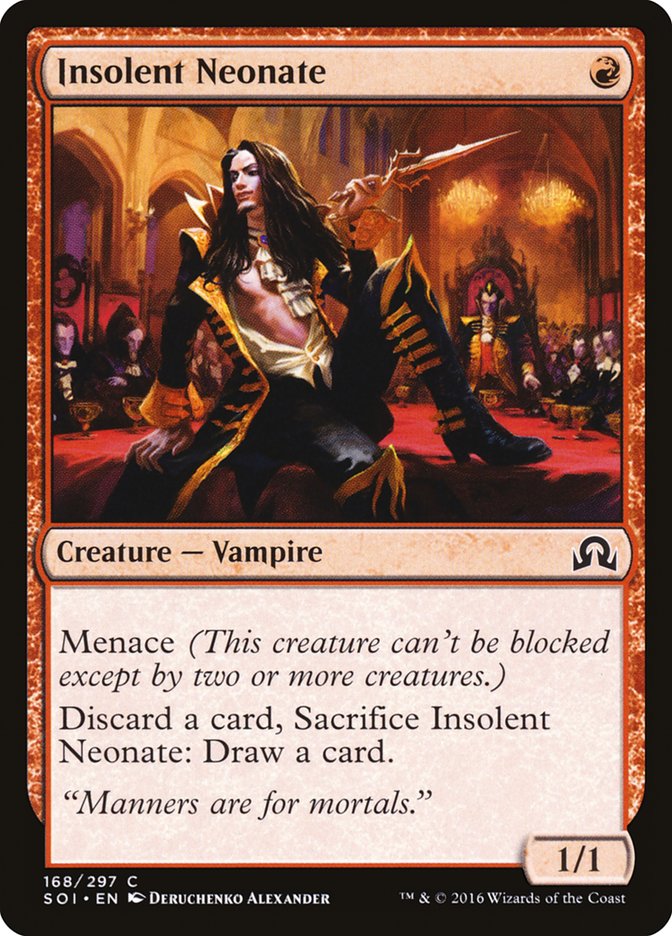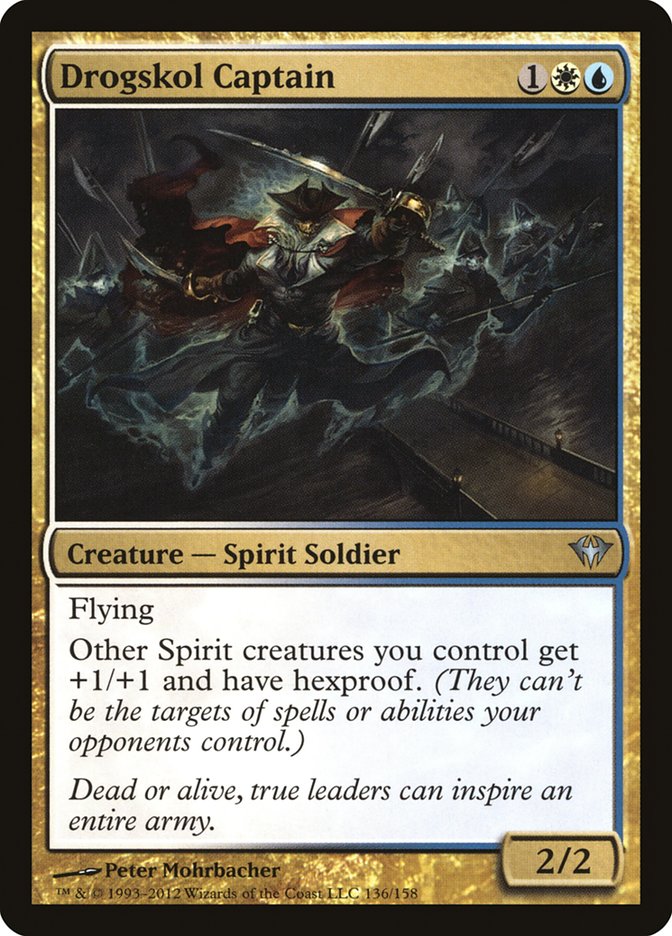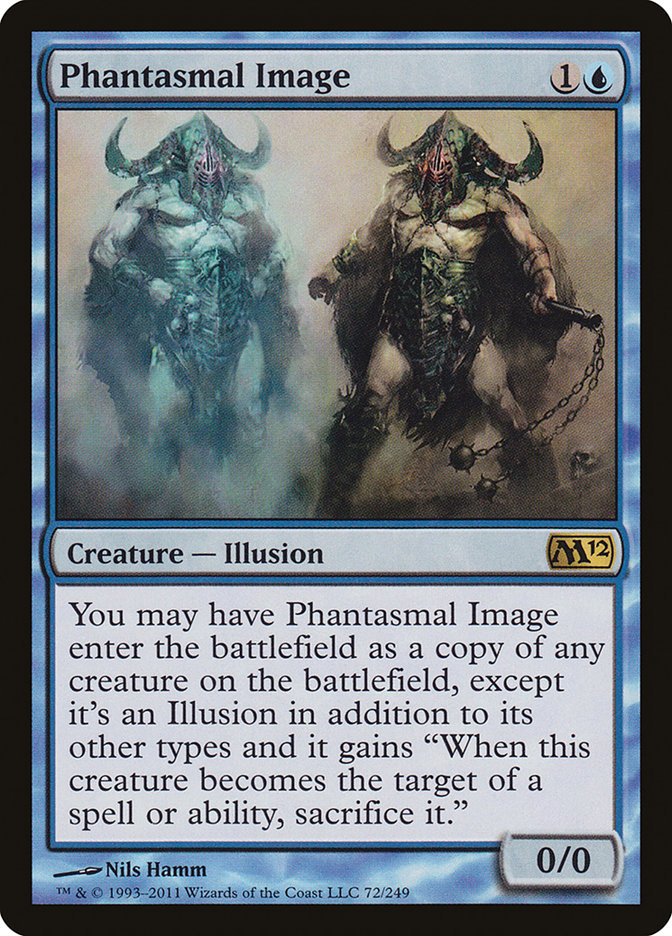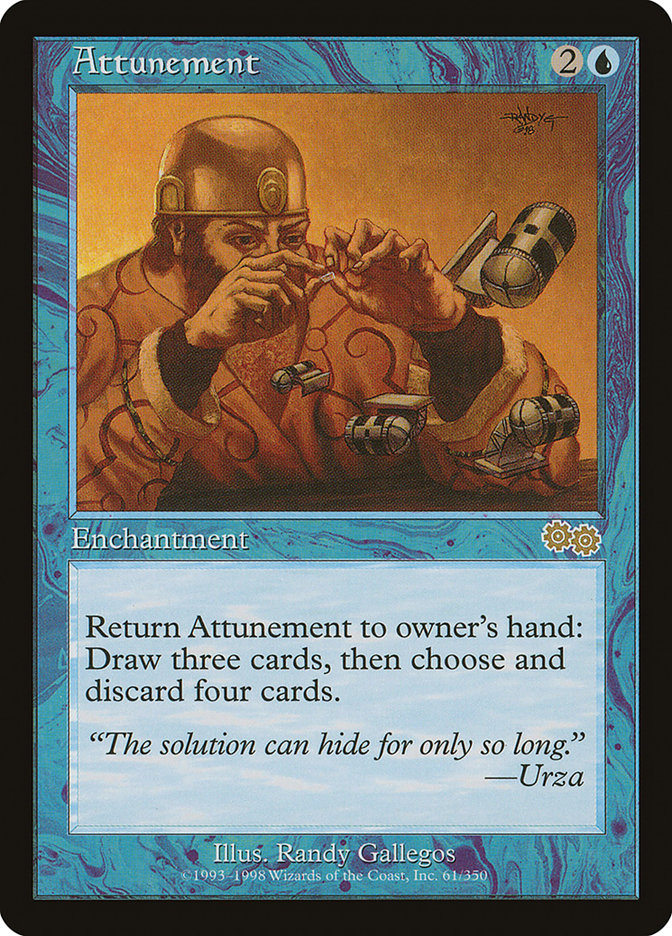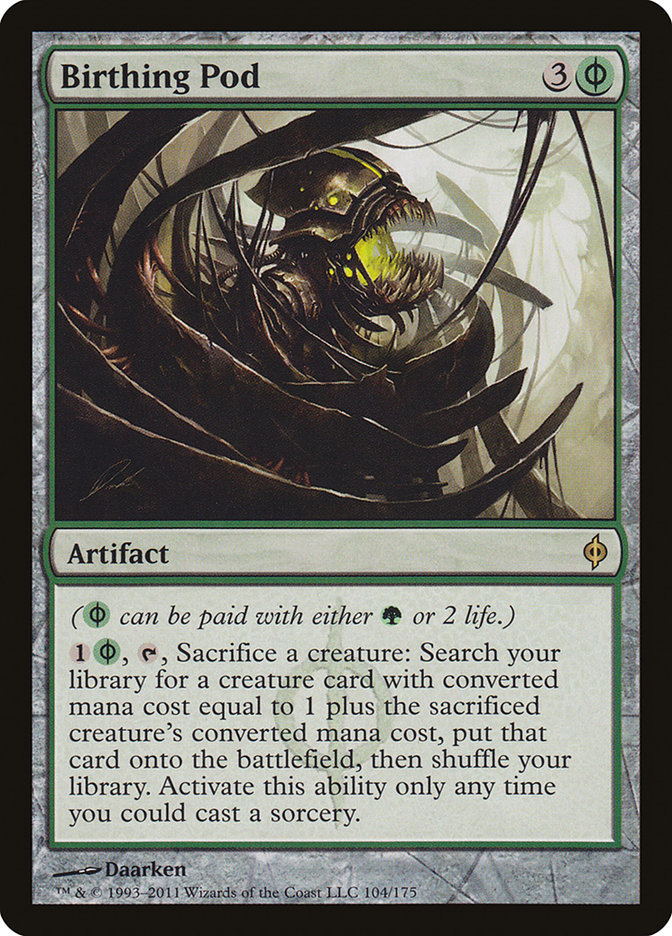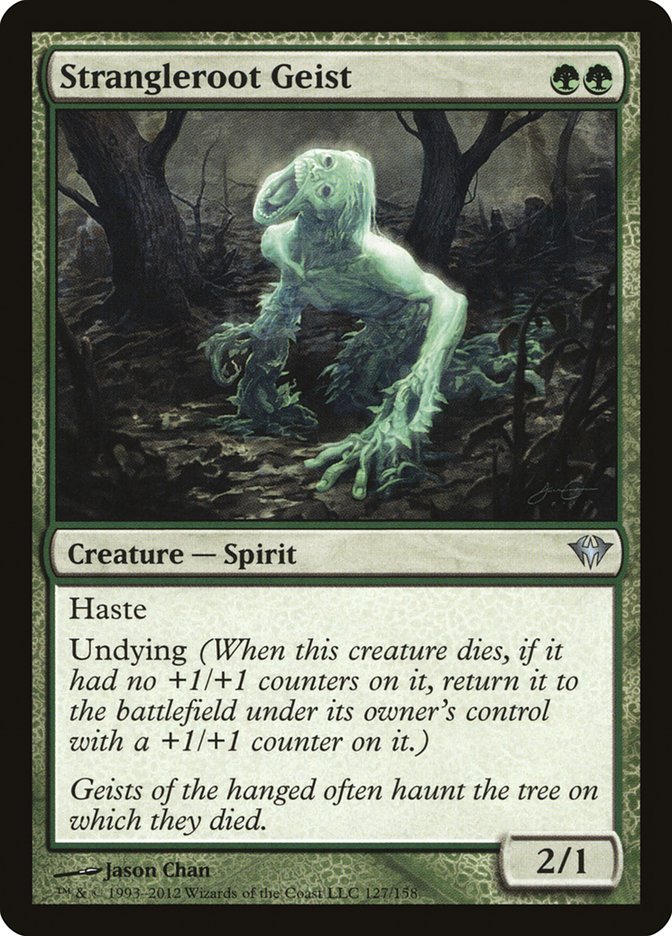Believe it or not, people actually come to me for advice on decks. I know, right? Took me by surprise too.
Because I’ve been there and because I know how hard it is to find someone to be helpful and provide constructive criticism, I always try to help out with advice when I can. People like Conley Woods, Mike Flores, Jesse “Smi77y” Smith, and Patrick Chapin have provided me with so much knowledge, both directly and indirectly, that I feel like it’s my duty to pass it on.
Deckbuilding is hard. No, no, bear with me. When I say that, I mean building your own deck is hard. Physically collecting the cards to play the latest Gerry Thompson version of a deck is relatively easy. I’m not about to turn this into the age-old netdecking vs. brewing argument (my stance on that has changed drastically over the last six months anyway) [Good, because it isn’t 1998—Ed.] but the fact remains that many people prefer to build something that is uniquely them. And bravo! I think that part of the learning process of this game requires us to go through that stage, where we explore our own ideas and stoutly reject anything else. For some players it is drastically shorter than others, but like learning to ride a bike, it will eventually come to most people who want it.
Like a parent watching his first child grow up, I often see the same mistakes I used to make running through the decklists I receive, and I knowingly shake my head with a wry grin. My mother always told me that, when I had kids of my own, I would find myself saying the same things to them that she was saying to me. Of course, I was an adolescent and I knew better, so I scoffed at this obviously ludicrous assertion. I was never going to be as strict, as stuffy and as unfair as my mother! (As an aside, I had the least strict and stuffy mother of anyone I know.) She was right, of course. Certain life lessons have to be taught, and the way you were taught them tends to be the way you pass them on. With that in mind, and with the hope that people who listen to my podcasts will read this and find some value in it, I’d like to share some of what I’ve learned.
Lesson One: What are you doing with your mana?
Magic is a logic problem mixed with a resource management game. Cards in hand, cards in your library, permanents, and mana are your resources, and in general, the person who makes the best use of them will win. Each player can play one land a turn and draw one card a turn. If you have some way to bend or break those building-block rules of the game, you can put yourself ahead.
With mana, though, it is not enough to just have more of it available. What matters most is what you do with that mana. Let’s illustrate with an example. Josh is trying to build an Abzan Tokens deck. He puts in many powerful cards:
At the four-mana slot, he includes Parallel Lives. Doubling the tokens he can get seems like a great plan to him, and he’s seen the card in action doing some very powerful things in both Limited and Commander. Josh takes his deck to FNM, and Josh loses. A lot.
Parallel Lives is a skill-testing card. The effect it has is undoubtedly a powerful one, but is it worth the cost? I don’t just mean the 3G mana cost, which is actually quite good for the effect. I mean the opportunity cost, a term I got from the Limited Resources podcast. Parallel Lives occupies a spot in your deck and a slot on your mana curve. Optimally you want it on the battlefield as early as possible, which means you are likely tapping out to cast it. It then has no effect on the battlefield until you untap and draw a card. That gives your opponent a whole turn to deal with it with sorcery-speed effects, basically invalidating your entire turn and making you “waste” four mana. It also encourages bad play, as you will be tempted to hold back your token generators until you have this card on the battlefield.
Compare this with casting Garruk Relentless.
At the same mana cost you can instantly impact the battlefield, either by creating a token or killing an opposing creature. If your opponent then untaps and deals with your Garruk, you have still managed to impact the battlefield. Don’t get me wrong; it still sucks for you. But at least your investment of four mana yielded some return. This is even more important at four mana, which for most decks running 23-25 lands is the “breaking point” at which you stop expecting your mana growth to match your turn number. Four mana on turn 4 is reasonable, while five on turn 5 is less likely.
It’s a fundamental truth that the power of your spells increases with the mana cost, at least when it comes to tournament-quality cards. When building your decks, take that into account. Figure out what turns are your key turns, and by what turn you can expect to have “critical mass” of mana. Then make sure that the things you are doing with that mana are the most powerful things you can do for the deck you are building. Don’t put yourself in a position to get blown out by a commonly played removal spell that wrecks your whole strategy if there are better options.
Lesson Two: Don’t be a slave to your theme.
For perhaps the first time since the Lorwyn block, we have a Standard environment in which more than one tribal deck is viable. Both Spirits and Zombies have placed highly at professional-level events, with Zombies going undefeated through a Grand Prix. Humans has been a perpetually strong archetype since Innistrad came out. It’s only a matter of time before Werewolves becomes a deck, and Vampires can be pretty strong in an unexpecting meta.
There’s an inherent trap in building a deck around a tribe, a theme or a mechanic: including cards just because they fit the theme, or excluding cards because they don’t. Almost without fail, that’s wrong. Delver of Secrets is not a Spirit, nor does it transform into one. How many Spirit decks are not playing four of them? Fume Spitter and Phyrexian Obliterator aren’t Zombies either, but they are both close to ubiquitous in the Zombie deck.
When building a deck to be competitive, your top goal should always be to include the best cards that do what your deck wants to do. If you start off with the idea that “I want to abuse the fact that most Spirits have flying, so making them big and giving them hexproof seems good,” then you want to figure out first of all how many of your cards are going to be dedicated to that goal, because 37 Spirits and 23 land will win you precisely zero events. Cards like Lingering Souls and Midnight Haunting are very powerful, and they make Spirits.
Drogskul Captain buffs them. Great, we have a start. Lantern Spirit is hard to kill anyway, but for one less mana I can copy my Captain and buff it at the same time. Phantasmal Image dies when it is targeted, but…it’s hexproof now. Awesome, we have a base. This is where most people fall into the trap. It’s really easy to throw in things like Lantern Spirit to dodge sweepers, Niblis of the Breath to tap down Titans, Battleground Geist to give your creatures even more of a boost. It’s also probably not as good as adding Snapcaster Mage, Delver of Secrets and Mana Leak. “Spirits” is just a name for the deck; don’t let it lure you down the path of tribal troubles.
There are no prizes for keeping your deck on-theme. There are, however, prizes for playing good cards. If you can do both, fabulous! Ask yourself two key questions: Why am I playing this card? Is there another one that does a similar thing? If your answer to the first starts with “because it fits the theme” and the second answer is “yes, and it costs less” or “yes, and it does it better,” then chances are you should change it. This isn’t a hard-and-fast rule, but it’s a great starting point. This is a hard habit to break, but once you do, you’ll notice a major jump in the quality of your decks.
Lesson Three: Not every deck, even built by the best, is going to win all the time.
For us mortals, we can expect that win percentage to be even lower than a professional deckbuilder’s. That deck you thought of with the Necrotic Ooze/Grimgrin/Bloodline Keeper combo? The professional brewers all thought of it too. There’s a reason they are making money on the Pro Tour and we’re aspiring to win a Regional PTQ: they’re better at this than we are. They find the combos faster and they test them religiously. The thing that makes them better is that they know when to let an idea go.
You see, they built the same deck you did. They included all the same cards, and probably other ones you haven’t considered. They probably built a better manabase. When it didn’t win consistently, they discarded it. That doesn’t mean you shouldn’t try, far from it. As good as these players are, they are fallible human beings. The key here lies in recognizing when a deck idea just isn’t good enough, and subsequently in putting it down and walking away.
I firmly believe that, for regular players like you and me, any idea is worth testing. If after a few rounds of tweaking you’re still losing, it’s time to let it go. You found one of the 99 bad ideas that are hiding the good one. This isn’t a failure! It’s a learning experience. Whatever you do, don’t tear up your notes and never think of it again. A deck that is two turns too slow right now might be three turns faster when a new set comes out or when rotation happens. It’s just not the right time for your idea.
If you aspire to be better at deckbuilding, this is very hard to do. Your deck is your baby, this is your idea, and you don’t want to let it go. I understand. I’ve been there so, so many times. It was the hardest thing I had to learn and I still struggle with it. The thing is, your time can better be spent elsewhere. Move along.
This also applies to card choice within a deck. Very often you will come up with an idea based on a couple of cards and the idea will work, but one of the cards that initially led you down this path just isn’t pulling its weight. No matter how much you love the card in a vacuum, you have to cut it. Magic, like nature, abhors a vacuum and you can’t make card choices based on how you wish they played out. If you draw a card on turn 3, turn 9, and turn 12, and always wish it was something else…it should be something else.
Lesson Four: Never play a bad “something else.”
Every now and then a brewer hits upon an idea that is similar to a deck being played at what the cool kids call “Tier 1” level. Rather than take this as a good sign, the nascent brewer will often fight tooth and nail to keep their version intact simply because it is theirs. Alas, it is very rarely as good. If you find yourself building a G/W ramp deck that aims to get to seven mana and then cast Chancellor of the Tangle or Vorinclex, you’re guilty of this. You’re doing the same thing early on as a Wolf Run deck, but your end-game is nowhere near as powerful.
Choose a card. Any card. Except that one.
It’s a truism, but good ideas are successful because they are good. Sometimes there is a solid reason to deviate from a tournament-winning decklist: the metagame has evolved, or testing shows the changes actually improve the deck. Wolf Run White is probably a better deck than the straight G/R version, for example. But if you’re on the ramp plan I mentioned above, then you’re just playing a bad version of something else.
Self-assessment is not an easy thing, self-censure even less so. Nobody ever said this would be easy either. If it were, people like Chapin wouldn’t be paid to write articles on their decks, because everyone could do it. Recognising that your idea is the watered-down Pepsi and the GP-winning deck is the canned Dr. Pepper is the first step to figuring out why your deck isn’t good enough. Once you know the why, fixing the problem gets a lot easier.
Final lesson: Listen.
Certain elements of the Magic community have little to no respect for amateur brewers. If you’re a brewer, you may have wondered why that is. It’s because, by and large, we are the most stubborn, hard-headed bunch of ingrates that ever added mana to their pool. We’ll come up with an idea, we’ll send it far and wide and put it on our blog and beg people we respect to take a look at it…and then we ignore everything they tell us. As my good friend and podcast host Chewie would say…hey, dummy.
Why did you send your list to me, to Smitty, to Jack, to anyone? Were you hoping for endorsement or advice? If it’s the former, you’re not likely to get that. Anybody who enjoys building decks is going to have feedback to offer on your list, and if they don’t, it’s likely because it’s just too bad for them to bother with. Don’t take this as an insult or an affront to your creative genius.
Take it the way it is intended: as a potential lesson. You might already have tried the cards being suggested and found that they don’t work, but bear in mind that any advice you get is likely being provided in a vacuum. If you haven’t tried the suggestions, why are you dismissing them? Even if the person offering the advice is not a player you particularly respect, that doesn’t mean they can’t have a good idea.
All feedback is valuable, even that feedback you get and do not act on. In fact, some would say that type of feedback is more valuable because it can provide a sort of “save point” you can return to if your choice of paths does not work out. When I was playing G/B Birthing Pod, I steadfastly ignored any and all suggestions to play Strangleroot Geist because it wasn’t my idea, I didn’t think it would be good, and I couldn’t see a reason to try it. Then I tried it, and it was good. Really good.
I still don’t think it’s a four-of like some people were saying, but it definitely has a place in the deck. The only reason I didn’t know that before was a stubborn refusal to just…listen.
Although nothing in this article will guarantee you success at any tournament, it will at least remove one obstacle from the road to success: deck construction. You will never catch me suggesting that you should blindly take someone else’s exact 75 to a tournament, but before you can run, you have to learn to walk. Play other people’s decks. Learn what makes them good and what weaknesses they have. Then make them your own.





